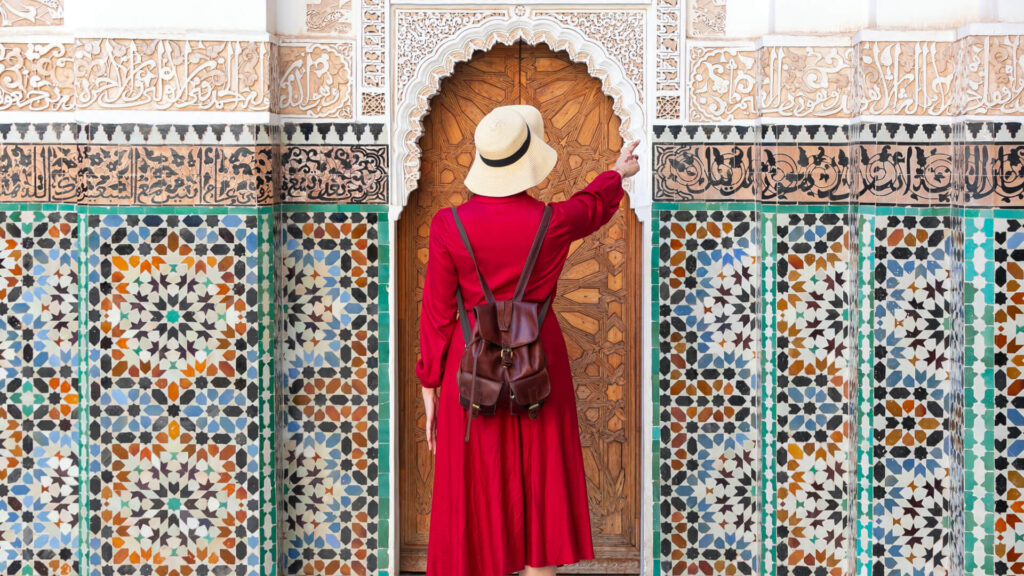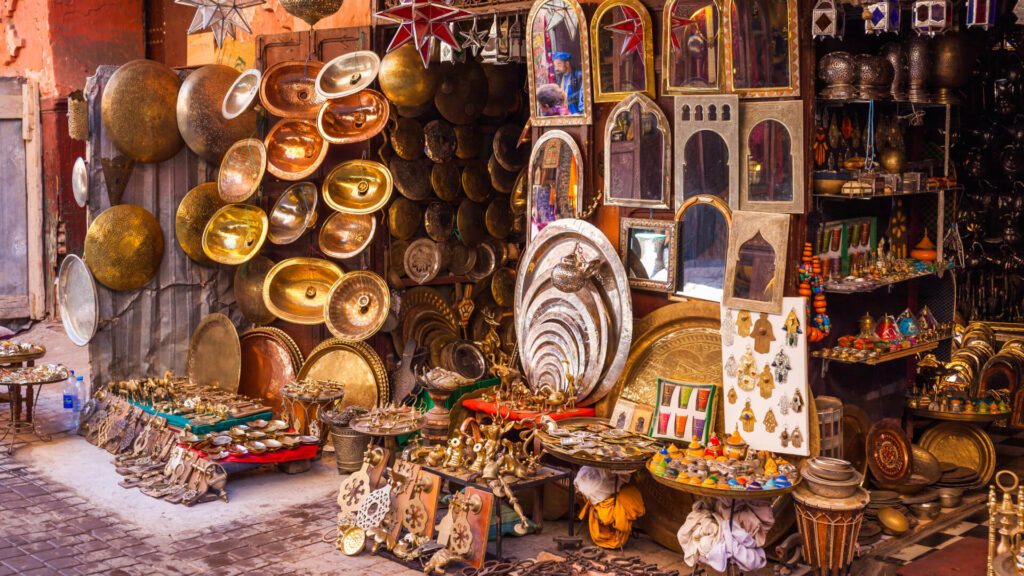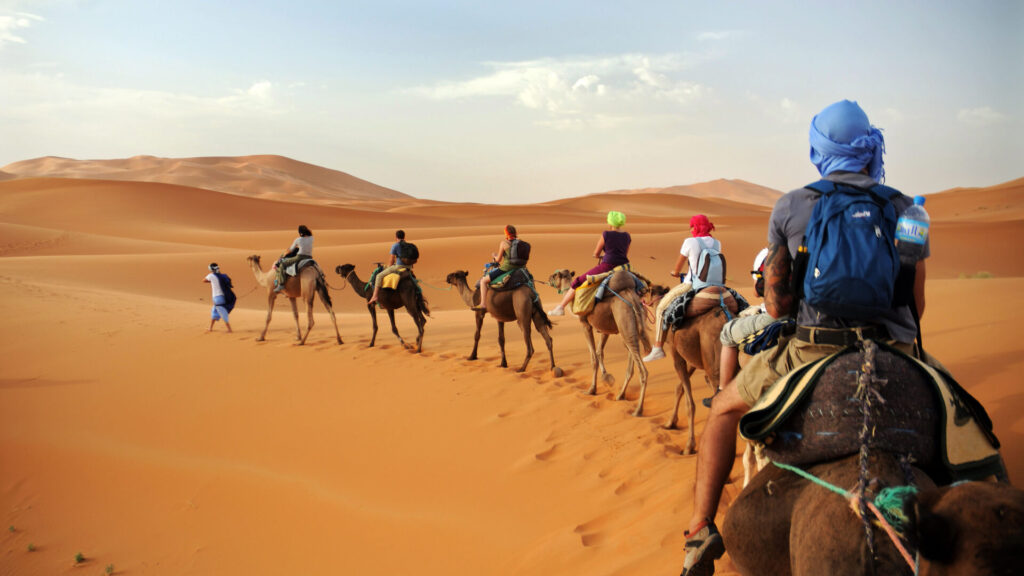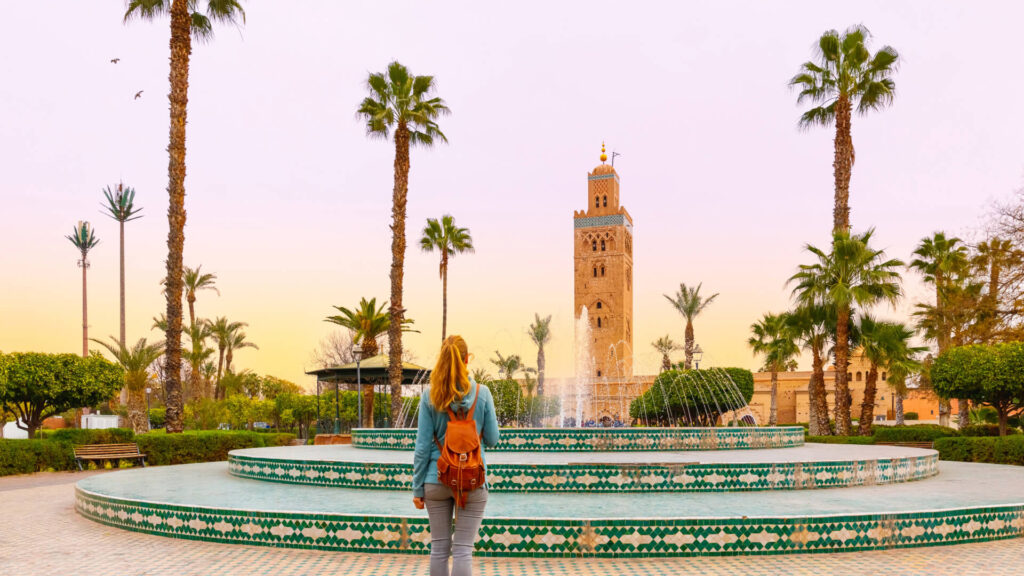You probably fall into the category of people who want to experience a bit of everything. Old cities. Desert skies. Mountain views. Some coastline too.
This Moroccan route delivers the entire experience. From Casablanca on the Atlantic coast to Roman archaeological sites and Marrakech’s complex maze of streets, this trip offers an unparalleled road adventure.
Simply put, every day brings something new.

Day 1: Casablanca to Rabat
Your trip starts in Casablanca. The city remains large even though it fails to draw visitors for extended periods.
Before departing it is absolutely necessary to see the Hassan II Mosque. It sits right on the ocean. Half of it is built over water. The craftsmanship is stunning, hand-carved wood, marble floors, intricate mosaics.
Even if you’re not into architecture it’s hard not to be impressed.
A short coastal drive from Casablanca leads you to Rabat. The capital has a different energy. Slower, more graceful. The Kasbah of the Udayas welcomes visitors through its blue and white walls where they can listen to the waves that border the area.
The site of Chellah shows Roman archaeological remnants alongside Islamic burial grounds which have become partially overgrown. The place extends the flow of time. Your evening brings you to the old medina where you find dinner at a peaceful riad. You sleep well.

Day 2: Meknes, Volubilis, and Fez
Your journey leads you away from Rabat as you drive into the mountainous region. Meknes comes first. It was once an imperial capital. Today it’s calmer than its cousins but full of charm. The Bab Mansour gate stands tall and proud. Still beautifully detailed after centuries.
After exploring Meknes you will proceed to Volubilis. The path leads through olive groves before revealing ancient Roman structures including arches, columns and shattered mosaics.
The surrounding atmosphere makes it seem like the past continues to exist. It is possible to picture what life was like in this place. The community included farmers, merchants, soldiers, and many other residents who coexisted as one entity.
The late afternoon brings your arrival at Fez. The city extends across multiple hills yet the authentic core exists within the medina. The walls close in. The sounds shift. Tomorrow you will explore this location where you currently reside.

Day 3: Getting Lost in Fez
Fez remains impossible to explore without proper direction. The medina is a maze. But it unfolds in the best way. Narrow streets, hidden courtyards, sudden views of mosques and madrasas. It’s busy, yes. But it’s life. Real life.
You pass donkeys carrying goods. You will pass by workshops where artisans produce metal trays by hand using hammers. Stop in at Al-Qarawiyyin, the oldest university still operating anywhere in the world. It’s tucked away, but beautiful. There are tiled fountains. Layers of history.
There’s a tannery too. Before reaching the location the strong odor of leather and dye and something acidic meets your senses. From the top you can see workers submerged in vats down below and it becomes an experience you will never forget. A tagine dinner might take place on a peaceful rooftop.
The rest of the day moves between high energy and small moments of calmness.
Day 4: Through Forests to the Desert’s Edge
Your departure from Fez begins in the early morning. The road starts climbing. Ifrane suddenly emerges with its clean streets and Alpine architecture and its parks containing fountains. People say that this place resembles “Little Switzerland.” Unlike the majority of Morocco.
Then comes Azrou and cedar forest. The Barbary macaques may be seen at this location. They hang around waiting for fruit. Then back in the car. The forest fades. The land flattens. Colors shift.
You pass through wide open spaces. Brown hills. Big sky. The silence grows. Erfoud serves as your overnight destination. It’s small but welcoming. A kasbah hotel. Maybe a garden. You eat under the stars.

Day 5: Into the Desert of Erg Chebbi
Breakfast. It begins a bit slowly. The journey continues to the dunes after you get back on the road. On the way there’s Khamlia, a tiny village with incredible music. You stop, listen, have tea. It’s warm. Peaceful. A piece of the everyday life from this part of Morocco.
The next attraction are the dunes of Erg Chebbi. The flat desert suddenly yields to the rising dunes. Golden and soft mounds. You switch to camels. The ride is slow. You feel the sand shifting beneath your feet with every move. The sun lowers. Shadows stretch.
The camp is ready when you get there. A fire is being prepared. You sit. Drink tea. Watch the light fade. Dinner is hot, made with care. Afterward there’s music. A mix of drumming and silence.
The stars are huge out here.
Day 6: The Dades and Todra Gorge
Waking up early is worth it to see the sunrise. The air is cool. Light pours onto the sand as if someone was spreading it with a spoon.
You head out after breakfast. Back through the desert. Rissani follows next, a small dusty place with an active market. Then Tinghir. Palm groves stretch out, flat and green. Then comes the Todra Gorge. The area features towering walls and a small passage through which water flows. People climb here. Others just walk. It’s peaceful.
From there the road winds to the Dades Valley. More cliffs. More strange rock formations. The light here is special. It changes quickly. You sleep nearby. A stone house guesthouse with rose bushes surrounding it.
Day 7: Ouarzazate, Ait Benhaddou, and Telouet
The road to Ouarzazate cuts through the south. You stop at Ait Benhaddou. It’s quiet in the morning. The red walls are in the sun. The ascent is gradual as you periodically stop to admire the view of the valley.
There’s a timeless feel here. Like the world hasn’t moved on.
In the afternoon, the group will visit Telouet. Not many tours stop here. The kasbah is partly in ruins, but the painted ceilings and zellij tilework still shine. You feel like you are standing inside a memory.
You cross the High Atlas once more. The road is sharp and narrow. But the views are wide. You reach Marrakech by dusk. The city glows orange. The day ends with dinner and a quiet night.

Day 8: The Last Imperial City of Marrakech
Marrakech hits differently after everything else. It’s loud. Alive. Full of color. You walk the souks again. See the Bahia Palace. The Koutoubia Mosque. You take a break in Jardin Majorelle, a cobalt wall and cacti taller than you garden.
The square begins to fill while you watch. Charmers, juice sellers, acrobats. You let the noise settle around you. Let it become part of the soundtrack to the day.
That evening you eat with a local family. Sit at their table. Hear their stories. Share your own.

Day 9: Back to Casablanca
The road takes you back to where it started. Casablanca. You stop along the way but spend more time thinking than talking. It’s that kind of day.
The journey ends with airports and goodbyes. But the images stay: a narrow alley in Fez, a dune at sunset, a bowl of soup and a lightly burning fire. Morocco lingers.
Contact us now to organize your upcoming trip.
